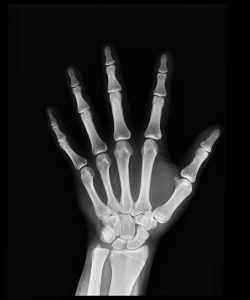Rivaroxaban or Enoxaparin in Non-Major Orthopedic Surgery
A recent study published in The New England Journal of Medicine outlines the clinical study of using Rivaroxaban or Enoxaparin in non-major orthopedic surgery.
In patients immobilized by non-major orthopedic surgical procedures, rivaroxaban was more effective than enoxaparin in preventing venous thromboembolism (VTE) events.
The risk of major bleeding events was not significantly different.
Use and Study of Rivaroxaban or Enoxaparin in Non-Major Orthopedic Surgery

Currently there is a lack of consensus on the use of thromboprophylaxis in patients undergoing no major orthopedic surgery.
PRONOMOS was a double-blind, parallel group, noninferiority trial that included 3,604 adult patients (mean age 41) who underwent orthopedic surgery of the lower limb and received thromboprophylaxis for more than 2 weeks.
How was the study conducted?
Patients were randomly assigned to receive rivaroxaban once daily (10 mg) + a subcutaneous injection of placebo (n = 1,809) or an injection of enoxaparin (4,000 IU of anti-Xa activity) + an oral placebo (n = 1,795). .
The pre-specified safety evaluation criterion was the appearance of serious bleeding and clinically relevant non-serious bleeding.
Likewise, a study initiated by the Saint-Etienne University Center has compared rivaroxaban with enoxaparin in non-major orthopedic post-operation. A total of 200 sites in 10 countries participated in this study, including 3,604 patients.
Understand the results
The results show a 75% reduction in the risk of major venous thromboembolism with rivaroxaban versus enoxaparin. Furthermore, the use of rivaroxaban has not been associated with an increased risk of major or minor bleeding.
This international, randomized, non-inferiority study was conducted in a double-blind parallel group. At the investigator’s decision, patients at risk for venous thromboembolism received rivaroxaban (10 mg orally) or enoxaparin (40 mg / 0.4 ml or 4,000 IU subcutaneously) once daily.
The primary composite end point included the occurrence of proximal or distal symptomatic deep vein thrombosis, pulmonary embolism, or death from venous thromboembolism during the treatment period or asymptomatic proximal deep vein thrombosis at the end of treatment).
Main results of the study
A total of 3,604 patients were randomized to receive either rivaroxaban (n = 1,809) or enoxaparin (n = 1,795). A prophylactic dose of low molecular weight heparin was administered to 13.8% of patients prior to surgery. The main types of surgery included knee ligament repair (37.0% of procedures), ankle fracture (15.1%), complicated knee arthroscopy (9.0%), tibial osteomy (6.4%), tibial fracture ( 5.3%) and Achilles heel repair (5.1%).
Treatments were administered for 28.6 days on average and the median follow-up after treatment was 33 days in both groups.
Among all patients, 0.2% of rivaroxaban patients and 1.1% of enoxaparin patients had a major venous thromboembolic event.
Read more Science News on WeeklyReviewer!

